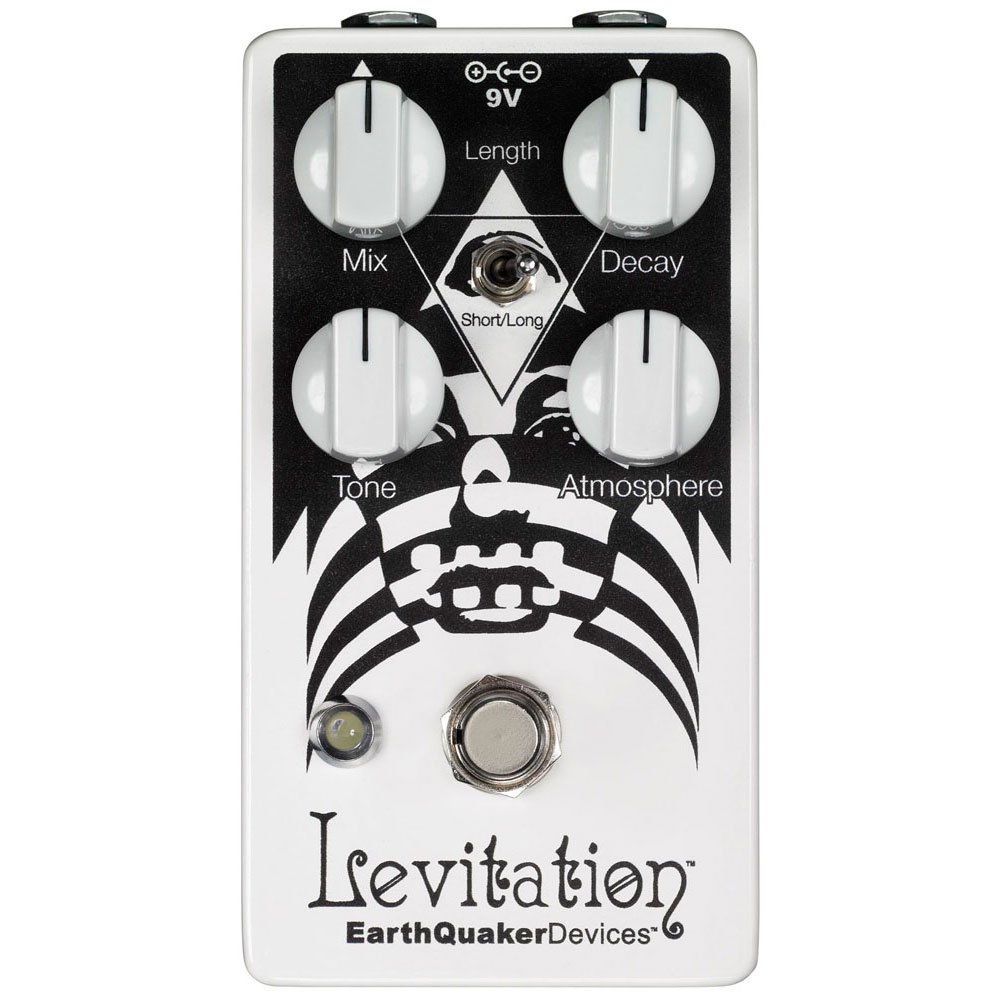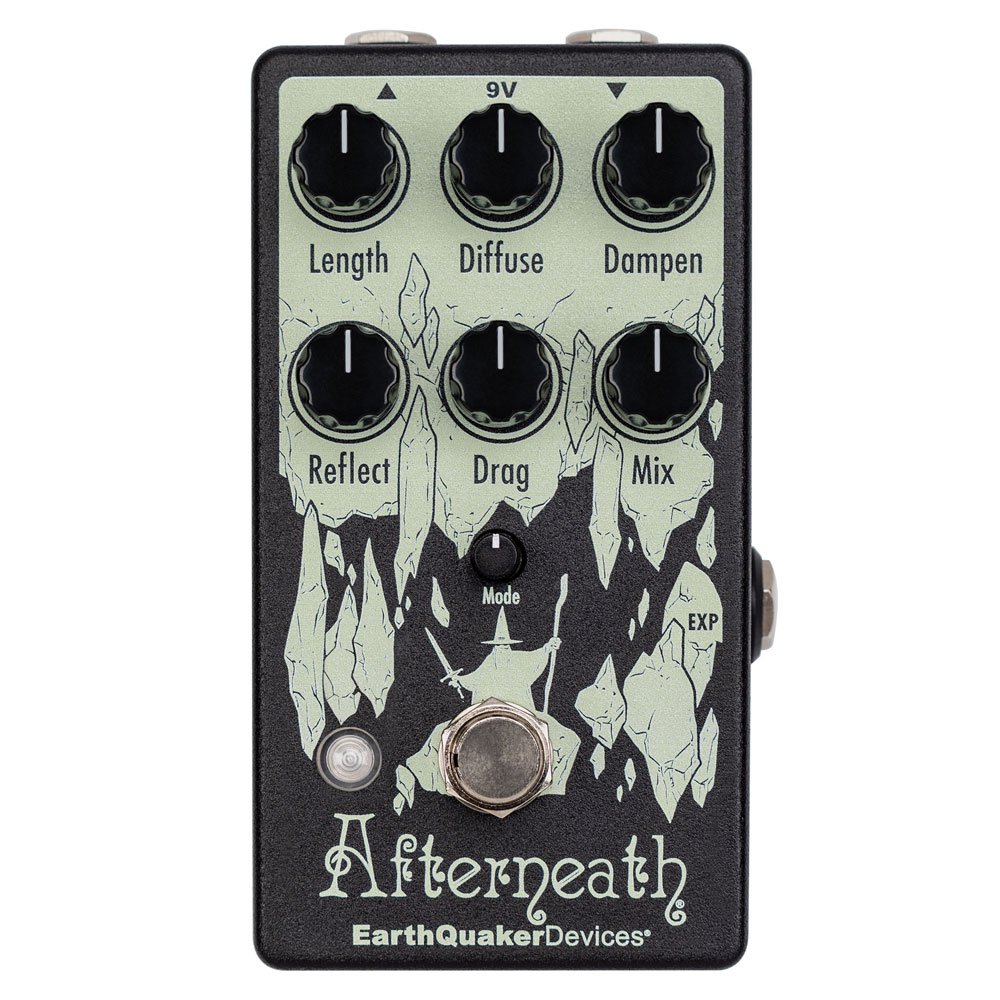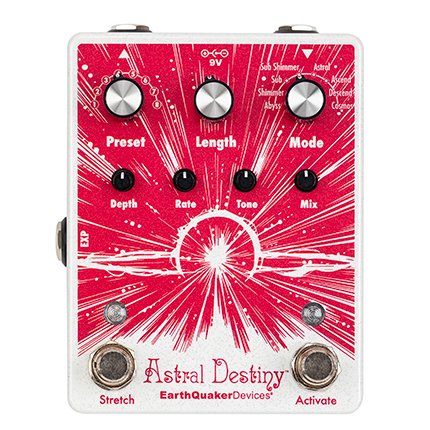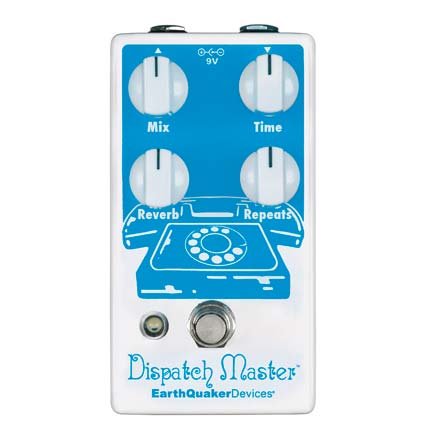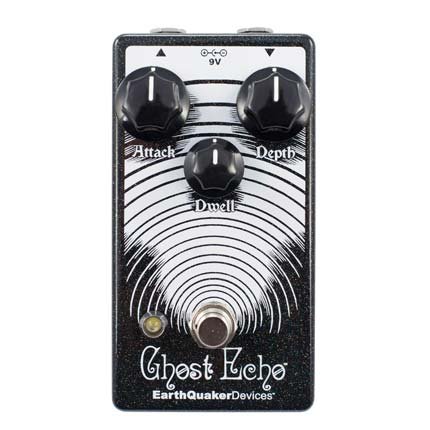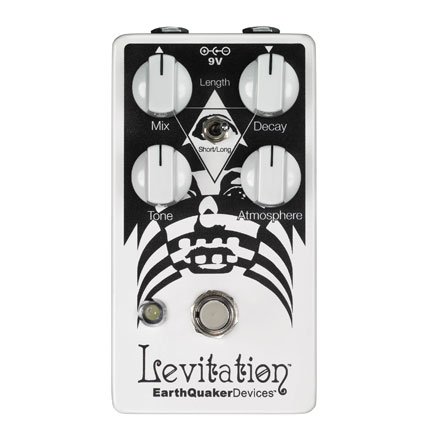Reverbology
Malcolm X Abram
Welcome, pedal lovers and gear-curious lurkers! Here we are again, taking another look at a single group of EarthQuaker pedals. Today we're going to do a side-by-side comparison of EQD's line of reverb pedals. EarthQuaker has a couple of pedals that contain both reverb and delay, but for our purposes, we'll focus on the reverb aspect and get to the delay in a later post.
Reverb is an essential part of most signature guitar sounds. Outside of perhaps some of the heaviest of metal and some ultra-tight funk, and R&B licks, most guitarists add at least a taste of reverb to liven up and add depth to their dry signal. Reverb has also long been an essential part of recorded music. It helped to set the sonic foundation of much of pop and early rock and roll. It was an integral part of many beloved studios with signature sounds, including Capitol Studios, Sun Studio, Motown's Hitsville U.S.A., and Abbey Road Studios. Now, of course, through the magic of technology, musicians can not only get a good and realistic reverb sound on their amps or pedalboards but also from digital plug-ins when recording.
There are reverbs in many popular amplifiers (those famous Fenders, for example), but if your amp either doesn't have built-in reverb or if it does and it just sounds junky, you can let your pedalboard give you more than what you need.
Nearly every pedal maker, whether it be BIGPedal or Boutique, offers some take on a reverb. Basic, old-school plate and spring sounds are standard, but with technology, designers can also produce wild and inventive reverb adventures that even the best rooms or tanks simply cannot achieve. Versatility in a reverb stompbox is important to EQD founder and lead designer Jamie Stillman when playing live.
"I generally like a big atmospheric-type reverb, but I like to use it subtly. I like being able to blend in and sound natural without overpowering everything, especially in the decay, is a must.”
Naturally, you won't always want to sound like you’re jamming in a stalactite-dotted, space-bat cavern on the seventh moon of Jupiter (Ganymede). To that end, we aim to give you a taste of the crazy stuff each of our reverb pedals can offer, as well as more traditional reverb sounds. If you can only choose one at the moment, it should be the one that can cover all your live and studio needs.
METHOD TO OUR DIY RECORDING MADNESS
As outlined in the Fuzzcyclopedia post, we at Upstairs Bedroom Sound Labs try to present the pedals using the relatively modest equipment many of our fans and customers own. The folks who aren’t working professional musicians or who mainly record at home using some hybrid version of "in-the-box" with a DAW. So, for the guitar tracks, we'll be going from a "PartsMaster" (Jagmaster-ish style guitar) with an HSS pickup configuration into our pedalboard featuring a Mooer 014 Taxidea Taxus digital preamp in clean mode, then into each of the EQD reverbs. The signal chain then travels into a Mooer Radar cab simulator using the “Twinverb.S 2X12” cab modeled on a Fender 1970 Twin Reverb Silverface. The Mooer is followed by our trusty Focusrite 4i4 and finally into Harrison Console’s Mixbus 32C 7 DAW. The configuration is slightly different for the drums and synth samples. The signal is generated from a sample in Mixbus and then routed out of the 4i4, into a Radial Pro-RMP studio reamper, through the pedalboard - minus the preamp and cab sim - and then right back into Mixbus.
MEET THE EARTHQUAKER REVERB PEDALS
For gear heads who like to unscrew the backplate and look around at capacitors, resistors, and integrated circuits (I.C.'s), you'll notice that the Astral Destiny, Afterneath, and Dispatch Master are FV-1 based delays. The Ghost Echo and Levitation use the good ol' beloved PT2399 technology. Both I.C.'s are integrated circuits (IC), but the FV-1 is more recent, designed in the early 2000s. There are plenty of good reasons to use either chip, depending on the overall effect a designer is chasing.
"They are wildly different from each other," Stillman said of the two main chips used in modern reverb pedals.
"The FV1 has a lot of capabilities for great-sounding reverbs, [because] that is what it was designed to do. There is a lot more room to play around and create cool new sounds. The Belton Digilog tanks are designed to be a set-and-forget type reverb; almost everything has to be done outside of the ‘tank.’ So, there is very little you can do to change the overall characteristics of the reverb. I like working with those limitations, though. It clearly defines what you can do and kind of makes the job ‘easier.’ Both are great sounding devices, but I prefer the FV-1," Stillman said.
Without getting too technical, the FV-1 is an all-digital chip with the advantage of on-board processing. The PT2399 is also quite versatile and a bit of a hybrid chip originally used in karaoke machines, car stereos, and surround sound configurations in the late 90s. The PT2399 works with analog circuitry, and when used for delay, it offers a shorter total delay time than the FV-1, and it tends to start getting dirty when pushed beyond around 450 ms, which can be a fantastic sound.
For more detailed descriptions of the pedals, their controls, and a wider variety of sound samples, please go to their respective product pages for those deeper dives.
Ghost Echo
Arguably one of the most relatively "standard" sounding of our reverbs and the first reverb pedal in the EQD line. It's a digital and analog take on the classic spring reverb sound. It has three easy controls; the attack offers 30ms-150ms of pre-delay and a good variety of "normal" echo and slapback sounds, and it can get a bit wild. The Depth control sets the intensity, and the Dwell controls the length of the delay and allows it to drift into some fun self-oscillation weirdness. But if you're looking for a truly crazy reverb, consider the others.
Levitation
A vintage-voiced reverb that is a bit more flexible than its Ghostly cousin, and not just because it has one more knob. It can make the spring-inspired sounds found in the Ghost Echo and give you musical, resonant plate sounds. But the fun really begins with the short/long toggle and atmosphere knob, which can send your signal into wild oscillations territory and all the unhinged echo points in between.
Afterneath
Here's where we get a bit unhinged! The Afterneath has found its way onto the pedalboards of many adventurous guitarists and is also a fantastic table pedal for keyboardists, sample manipulators, and anyone who just wants to go sonically nuts. As with all of EQD's reverbs, the Afterneath can be tamed to give you "regular" verb sounds. But, it sure is a lot of fun to play with the six unique controls and discover the cornucopia of atmospheric, subtle and downright aggressive sounds you can achieve with a few twists.
Dispatch Master
But wait, you say! Isn't the beloved Dispatch Master a delay and reverb? Yes, it is, but many folks love the reverb and use it with the Repeats knob down or add just a taste of the delay repeats for a deeper verb sound. It's a very tasteful reverb with a hint of modulation and sounds great on stage or, more importantly, emanating from the stage into the ears of your adoring audience or dutiful producer in the recording booth. We'll get to the D.M.'s delay possibilities in a later post.
Astral Destiny
It's our newest and arguably most feature-packed reverb. It's not called an "Octave Octal Reverberation Odyssey" simply for the catchy alliteration. It's FV-1 based and a bit larger than the others in the reverb line, and it has eight very different modes. There's the "normal-ish" Abyss, the requisite shimmer, a sub-octave, a combo of shimmer and octave, both ascending and descending pitch bending, and even a regenerating fifth for you harmony lovers. Oh, and there's also modulation and the unique stretch function which changes the pitch and doubles the reverb tail. Sure, it can all seem a bit daunting, so to help ease you into the possibilities, the A.D. also has eight presets, programmed by Jamie Stillman himself, which also cover relatively standard reverb sounds to some wildness. It's a real Odyssey!
Avalanche Run
The popular Stereo Reverb and Delay with tap tempo is well known as a versatile beast of a delay. But the plate-style reverb is also pretty versatile. The decay has a touch of modulation similar to the Dispatch Master and using the dedicated Decay and Mix controls you can get some good, nearly fully wet deep cavernous sounds. Additionally, using the expression jack assign switch enables you to control the decay length or reverb mix with an expression pedal.
THE SOUNDS – A FEW BRIEF NOTES
For each pedal we offer one mellow guitar riff played with two different reverb settings. The first clip has the reverb controls all set at noon and the second has them at “max-ish,” meaning the controls were set at as close to maximum as possible without the original signal oscillating into madness. Remember, both the Afterneath and the Ghost Echo can quickly get wild on you.
The Astral Destiny is in the “normal-ish” Abyss mode with the reverb length and modulation controls set at noon, adding an engaging, warbly layer of melodic content to the original signal. Near the end of the Astral Destiny clips, we also activated and deactivated the stretch function, just for fun. Also for fun, we ran the drum sample through the Avalanche Run in Swell mode with the delay controls off. It turns the original drum sample into a rhythmically interesting, syncopated and hiccuping bit of weirdness that some musically precocious tween will likely turn into Tik Tok’s feel good hit of the Summer of 2023.
For the drums samples, we set the mix controls at noon and the reverb controls at around 9 o’clock, to give you a sense of the more subtle but still unique possibilities available. Alternately, on the synth bass sample, we set the controls at around noon.
OK, let’s get to it! Remember, this is a primer to help understand what these various and varied pedals sound like with similar settings. If one of them moves you, please visit their respective product pages for more on what each control does and to hear more sound samples.
GHOST ECHO
LEVITATION
AFTERNEATH
DISPATCH MASTER
ASTRAL DESTINY
AVALANCHE RUN
Malcolm X Abram is a recovering reporter and music writer and a proud 40 year guitar noodler. He lives, works and plays in the bucolic dreamland of Akron, Ohio in an old house with two dogs who don’t really like each other and way too many spiders.


